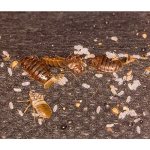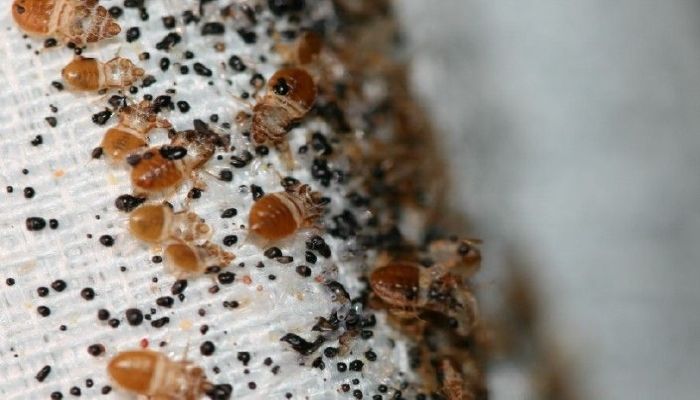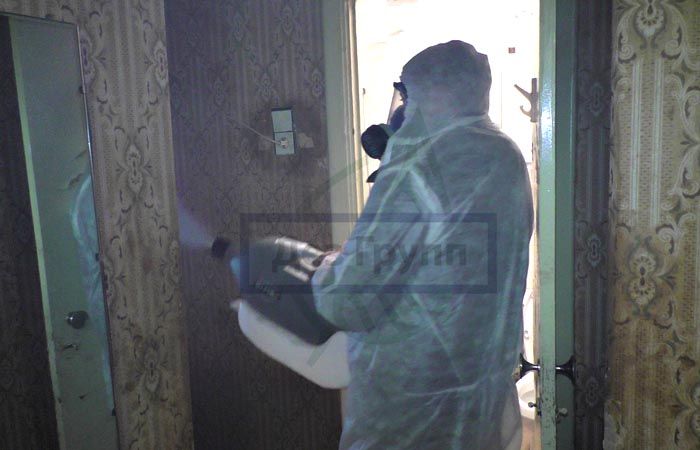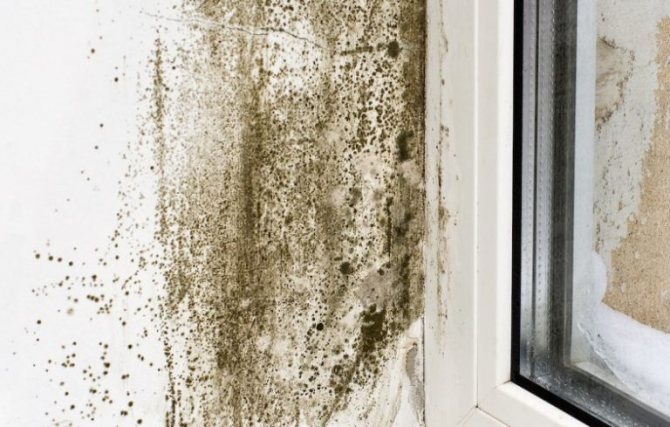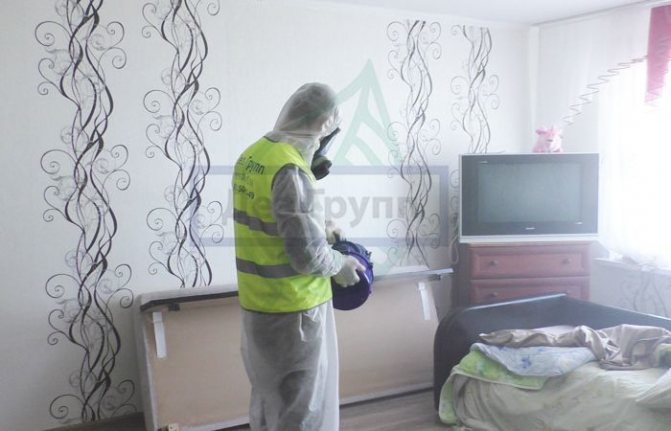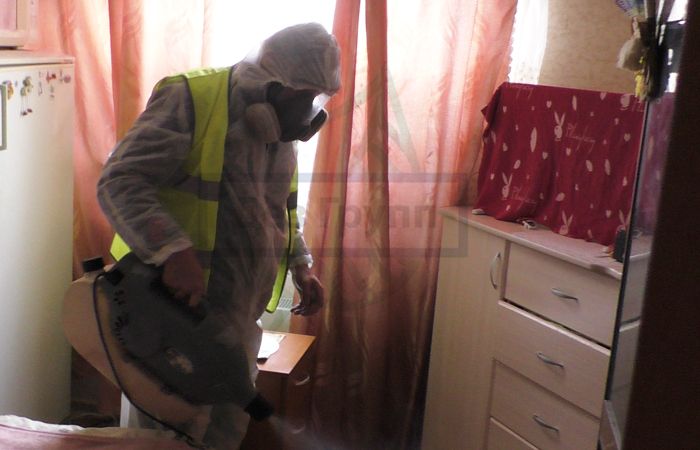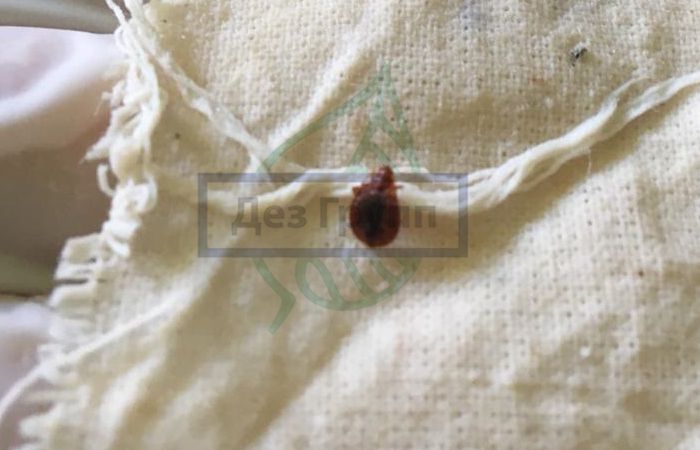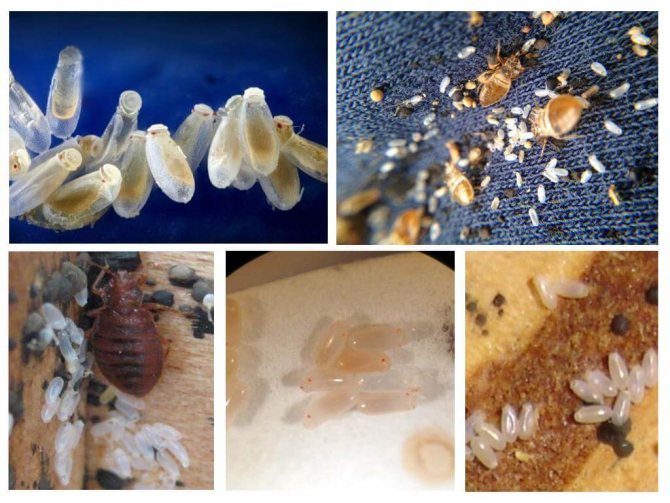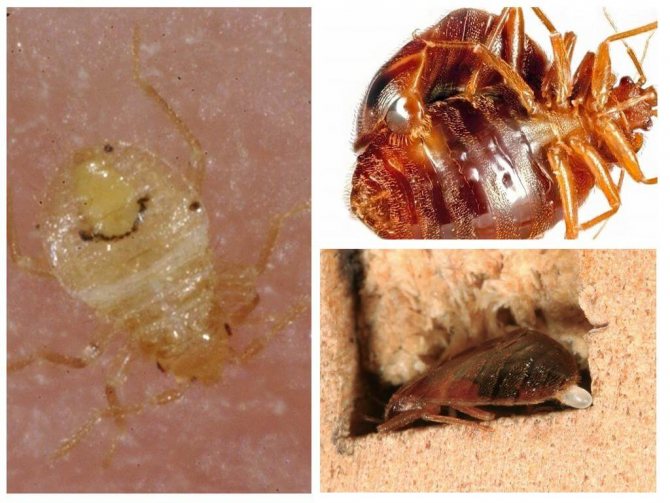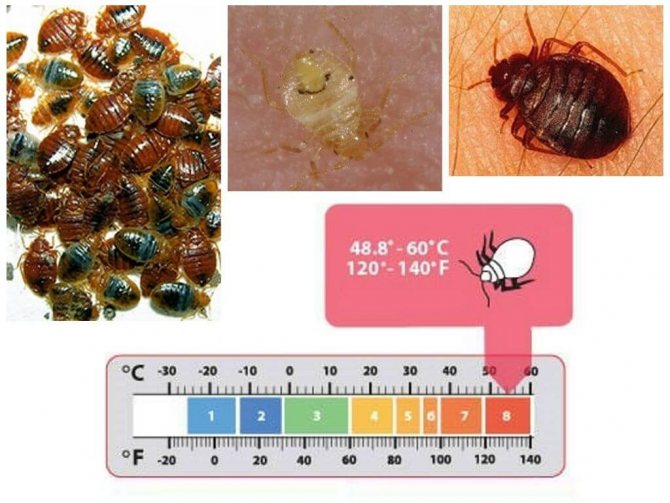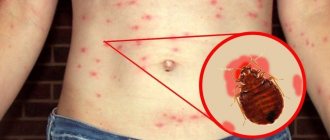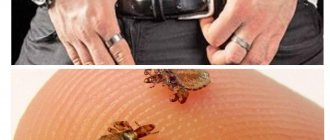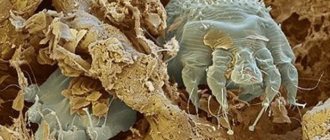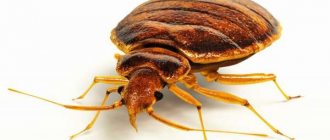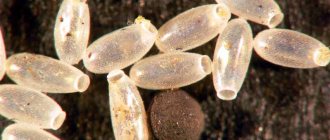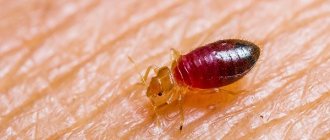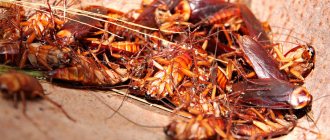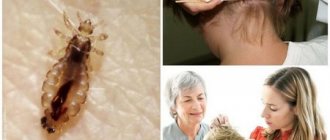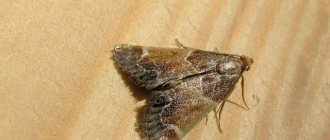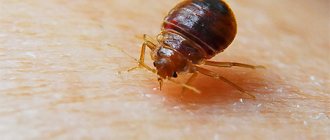Anyone who happens to find these insects in their homes quickly begins to look for a solution to this problem. It would be ideal to kill everyone in one go, but in practice, unfortunately, it is not so easy. This is because the poisons that kill adult insects do not affect their eggs at all. These include poisons - Permethrin, Cypermethrin of the pyrethroid group. And organophosphates are by no means safe.
The most optimal would be the use of insecticides of these groups mixed.
What do bed bug larvae look like?
Bedbug larvae look very different, despite the fact that in their development they practically do not change their body shape. The fact is that a larva hatches from an egg with a body length of less than 1 mm, and a nymph before the last molt, ready to become an adult sexually mature bug, is practically no different from an adult.
The photo shows the larva, just emerging from the egg, still with an empty abdomen:
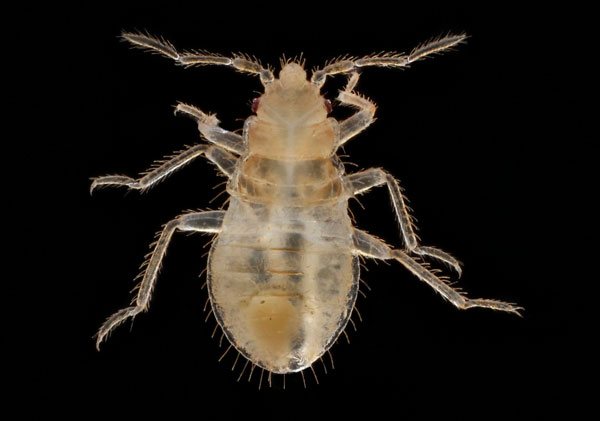
Therefore, by the way, bedbug larvae are called nymphs - they have the same body shape as adults, but differ in size. In this, bugs differ from insects with complete transformation, for example, the same butterflies and beetles, in which worm-like larvae hatch from their eggs, completely unlike adults.
For example, in the photo below there are two adult bugs, the far right is a nymph of the penultimate age, and all the others are nymphs of previous ages:
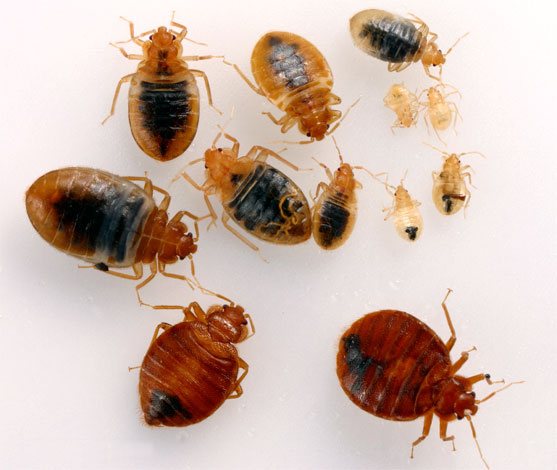

For example, a larva that has just emerged from an egg looks like a very small, tiny spider or mite. She has a yellow body and if you look at her with the naked eye, then she looks just like a small yellow dot. It does not look like an adult flat brown bug at all and therefore it is not surprising that many people do not even think that these are bugs.


By the way, on light mattresses, such larvae easily merge with the background and if you don't look closely, you might not even notice them.
And if you look somewhere for photographs of bedbug larvae, you will most likely find a macro photo where these larvae are shown with a strong approach. When you see them with the naked eye, you may not even understand that they are. Visually impaired people may not notice these guys at all on the mattress or furniture.
Order
You dial the number, describe the problem. The SES specialist covers the details in detail. Already on the phone you will find out how much it costs to destroy bedbugs in a house or apartment. Set a time, wait for the sanitary epidemiological station staff, enjoy insect-free housing. Call.
Other insects:
- Bark beetle
- Cockroach
- Mite
- Ant
- Flea
- Moth
- Mosquito
- Wasp
- Medvedka
- Fly
- Kozheed
- Woodworm
- Silverfish
- Hay-eating beetle
- Midge
- Beetles
- Woodworm
- Lice
Sizes of bedbug nymphs
As it grows, the body of the larva increases in size and it becomes more visible and more like adult bugs. If an adult has a body length of 5-6 mm, then the body length of a nymph ranges from 1-4 mm. Moreover, if the adult bugs are brown, then the nymphs are either yellow with a translucent body, or crimson-red, if they have just been fed. They need to be distinguished only from eggs - they are white and like grains of rice - and from excrement - they are round and black, like fixed points.
By the way, hungry nymphs can be overlooked, for example, on an unpainted tree, on the same bed frame, because they merge with it in color. But the nymphs that have been fed are very noticeable, they just look like running droplets of blood.
If you look at the nymph at all, you can see through the integuments of her body the stomach, the black contents of her intestines and other internal organs. When such a larva sucks blood, you can see how this blood flows into the stomach.
Where to look for secret hideouts
Bed bugs are predominantly nocturnal. In the daytime, they leave the person's bed and hide in their shelters until nightfall. It is there that they most often arrange masonry.
When looking for bed bug eggs, you need to carefully examine:
- bed linen, pillows, mattress;
- the frame structure of the bed, all the cracks and joints;
- bedside tables;
- unsticked areas of wallpaper;
- carpets on the front and back sides, the space behind them;
- skirting boards;
- paintings and frames on both sides;
- interior space of household appliances and electronics;
- space behind heating radiators;
- ventilation holes.
Bedbugs can also take a liking to other warm and dark places. If the colony is already large, there is a risk of finding bedbug eggs in clothes, on the seamy side, especially in the seams.


The sleeping room is a favorite habitat for both bedbugs and their eggs.
Larvae, or nymphs: how is it right?
Both the larva and the nymph can speak of immature bed bugs. For bed bugs, they are the same thing.
In entomology - in the science of insects - nymphs are called larvae, which, after leaving the egg, immediately have a body structure similar to that of adults. That is, a nymph is a larva that looks like an adult bug.
The photo shows all stages of bed bug development:
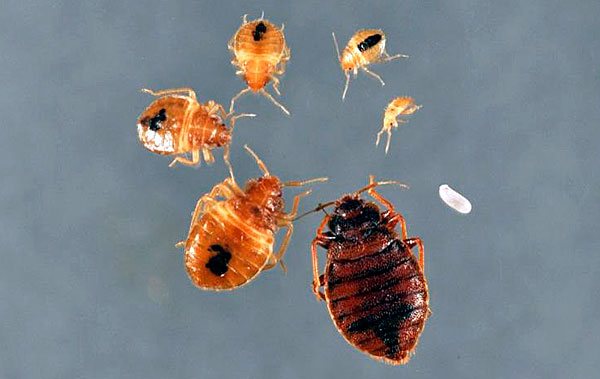

All insects are divided into two large groups - insects with complete transformation and insects with incomplete transformation. In the former, the larvae are very different in appearance from the adult insects. These are butterflies, for example, or beetles in which the larvae - caterpillars or worm-like stages - do not resemble sexually mature individuals at all. In insects with incomplete transformation, there is no such radical difference between individuals at different stages of development. These are bugs, these are cockroaches, grasshoppers. Their larvae are called nymphs and in fact they can be spoken this way and that way.
By the way, an important point: insect larvae with incomplete transformation, nymphs, usually lead the same lifestyle as adult insects. The only difference is in the size of their body, the underdevelopment of the reproductive system and some organs (for example, wings) and the inability to reproduce.
Here the photo shows a "white" nymph - a larva that has just molted, the integument of the body has not yet grown stronger and has not acquired a characteristic dark yellow color:
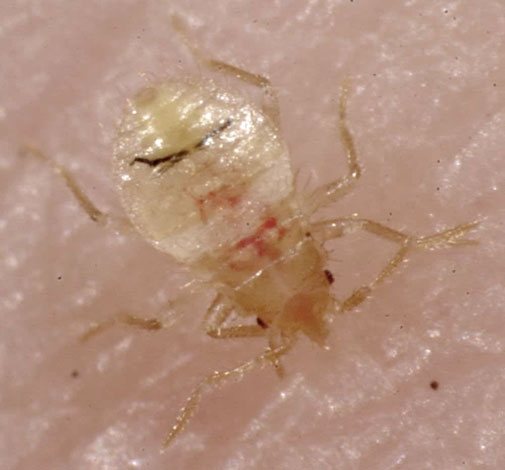

Bedbug nymphs are no exception in this regard. They live in the same place where adult bugs live, feed on the same food. That is, starting from a very early age, when they are still barely visible to the naked eye, they already bite a person and suck his blood. Their bites are not as painful as the bites of adults, or rather, if bumps and redness remain at the bite sites, then these consequences are not as pronounced as after the bites of adult bugs. And they itch a little less. For many people, even bumps from bites do not remain on the skin - just a small reddish speck, although their bites from adults are very swollen and itchy. But in general, bed bug larvae are just as dangerous as adults.
At what temperature do bed bugs and their eggs die?
For life, bedbugs need food and favorable climatic conditions (+ 20-30). In the presence of these conditions, bugs actively reproduce. At high temperatures, the reproduction process is accelerated, the larva develops faster.
If the temperature is too high, bugs can die quickly enough. Short-term exposure to cold (below 0) is tolerated by them normally, but prolonged cold can cause the death of insects. At +15 and below, the reproduction process stops, the larva freezes in development.
Under optimal conditions, the bug can live for about a year. When the temperature rises to 32 degrees, the development of an adult from an egg accelerates. Life expectancy is reduced by 2 months.
At temperatures from 20 to 25 degrees, bugs can live up to 15 months. At temperatures below 15 degrees Celsius, adults fall into suspended animation. Bedbugs can be in this state for about 1.5 years. The smell of blood can wake them up.
At +50 and above, bugs live no longer than 2 minutes, then die. At +45, they can live no more than 30 minutes. An egg in such temperature conditions lives up to one day.
At a temperature of -10 degrees, insects go into hibernation. At -15 and below, they will die, but on condition that such a regime persists for 3 days or longer. At -20 degrees, death will occur in a few hours. An egg in such conditions will last a maximum of 2 days.
The main danger of bed bug larvae
The danger of larvae lies primarily in the fact that there are always more of them in an apartment or in a separate room than adult bugs.
The fact is that the female bug lays 2-3 eggs every day, and during her 7-8 months of life gives new life to three to four hundred nymphs. The hatching time of larvae from eggs is 4-5 days, and this incubation period can be extended to one and a half weeks at low air temperatures.
Each nymph develops for about 28-30 days, that is, already a month after the female has matured and began to reproduce, her first offspring are already beginning to reproduce.
It turns out that in the population for each female there are several hundred of her own nymphs. And in fact, hundreds of times more of these larvae hatch indoors than there are adults here. Since they have no predators here, they all grow and multiply rapidly, and this age ratio is maintained here all the time. This means that several adult bugs and several dozen larvae bite you indoors every night. That is, in fact, they are even more dangerous than adult parasites.
About time of activity
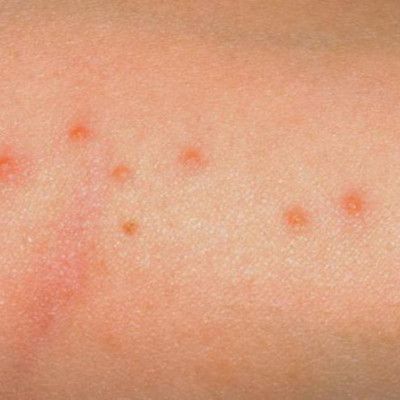

Bug bite marks, photo # 2
In the daytime, bedbugs are rare guests. The creatures are generally not connoisseurs of the sun, and neither are lamps. It is at night that most of the bites from bedbugs appear. Activity peaks between 3 and 7 hours. The result is that we wake up with different marks. Let's talk about them.
Interesting: a colony of bedbugs in an apartment produces an average of 1-2 thousand eggs per month. Imagine the scale of the threat.
Nymphs as the cause of allergies
In addition, during its development, it changes chitinous covers 5 times. The dry skins remaining from them are destroyed over time and mixed with dust, and when the air moves, they can rise and fall into the respiratory tract of a person.
These skins contain very aggressive allergens that often cause chronic rhinitis with runny nose and nasal congestion and dermatitis. And over time, such chronic rhinitis without treatment provokes the development of asthma.
Here, in the accumulation of bedbugs, numerous remains of their chitinous covers are visible:
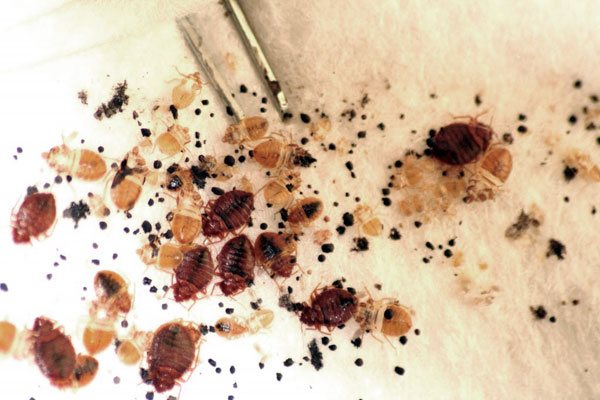

And the larvae in this regard are much more dangerous than adult bugs: each larva leaves behind 5 skins, and there are more of these larvae in the room than adults. That is, even the remains of dead bugs are less numerous than the discarded chitinous covers of the larvae.
Consequently, it is they who leave the largest number of allergens in the house, and if they live here for a long time, then the number of these allergens is constantly increasing exponentially.
Waste products
Bedbugs leave a lot of marks. They discard particles of chitin and leave excrement in their habitats. They look like tiny dark brown balls. There are always a lot of them, so they can be easily detected without the use of specialized equipment. Bedbugs hide and leave their waste products:
- in crevices and cracks in walls and floors;
- under a bed, sofa or wardrobe;
- inside furniture;
- under the upholstery of upholstered furniture;
- under the wallpaper.
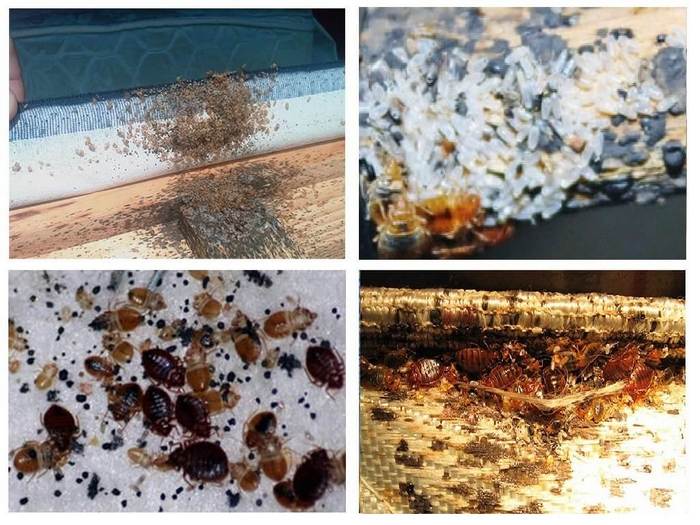

In addition to feces, translucent chitinous pieces can be seen. These are the parts of the shell that the larva sheds, turning into an adult. Chitin particles can be found anywhere in the room.
Why larvae are harder to hatch
There is another nuance: it is the larvae that can appear first after processing. The fact is that bedbug eggs are very resistant to the action of insecticidal drugs. Those agents that reliably kill adult bugs and larvae do not work on eggs. Today, there are no insecticidal preparations with proven ovicidal action on the market at all. This means that after processing in the apartment, all larvae and adult bugs die, but after a few days, nymphs begin to hatch from the eggs laid before processing.
If the treatment was carried out well and the correct remedy was selected, all these nymphs die. Good pest controllers use strong preparations with a pronounced residual effect for baiting bedbugs, that is, these agents poison bedbugs even when they dry out after treatment and insects run over the layer of the dry preparation. At least we in Desincity use only such remedies for bedbugs.
When the larvae hatch, they begin to look for a person, crawl to him, get dirty in the product and die from him. Plus, at the same time, the newly hatched larvae run very slowly, and when they get on the treated surface, they collect a very large amount of the drug. That is, they practically all die.
But sometimes some of these larvae can survive. There may be several reasons for this:
- There were a lot of bugs before processing, they left thousands of eggs and some single nymphs were able to avoid contact with the drug;
- The processing was unprofessional, the places where the larvae move were not processed, and they simply did not get dirty in the product;
- During the treatment, a tool was used that does not have a residual effect. Many folk remedies for bedbugs do not have such an effect and do not allow the larvae to be poisoned the first time.
Sometimes there are several of these reasons at once. In all these cases, after treatment, part of the hatched larvae can survive and they must be destroyed by repeated pest control before they become adults and begin to lay eggs themselves.
Destruction of eggs
Conditionally, you can get rid of eggs in 3 types of ways:
- mechanical;
- thermal;
- chemical.
Mechanical method
This method provides for the manual destruction of clutches, namely, crushing them with your hands. It is imperative to carry out such processing with gloves. This is perhaps the safest method, but the effect of it is often insufficient: it is often impossible to find absolutely all the nests in the same way as to get them in narrow cracks and other inaccessible places.
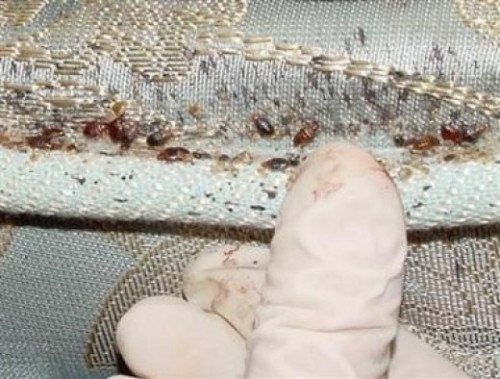

Thermal methods
Based on the name of the methods, it is clear that the temperature effect on the eggs of parasites is meant. If their shell is resistant to chemicals, then too high or low temperatures are destructive for them: below 10 degrees and above 50, the eggs of bloodsuckers and, naturally, the adults themselves simply will not tolerate.
To do this, you first need to find clutches and nests. Then just pour hot water heated to 80 degrees on these places. Bedbug eggs will simply "cook" instantly.This is an absolutely safe and affordable method of destruction, which does not require any money costs and a lot of time, and the effect of it has been proven over time.


Clothes and furniture must also be thermally treated. To do this, you can apply any of the following options:
- take out in the cold;
- process with hot steam;
- hand over clothes to dry cleaning;
- boil clothes for 20 minutes or wash in a typewriter at a high temperature;
- after boiling or washing, iron the clothes thoroughly with an iron, especially all seams and folds.
However, this method also has its drawbacks:
- not everything can be filled with such hot water (wallpaper, some furniture, paintings, etc. may suffer from this);
- not every hard-to-reach place in the apartment can be reached;
- if there are too many bugs, this method will not be the most suitable.
Chemical method
As already mentioned, the protective shell of bedbug eggs prevents chemical aerosols from entering and poisoning the developing larva. But this does not apply to all insecticides: there are special microencapsulated sprayers. Of course, they will not damage the membrane either, but immediately after "birth" the larvae destroy it due to their prolonged action.
You can also make a mixture of turpentine, kerosene and boiling water (15 ml / 20 ml / 150 ml, respectively) with your own hands and immediately, while the product is hot, treat the masonry and nests with it. This method will provide at once a double effect - thermal and chemical.
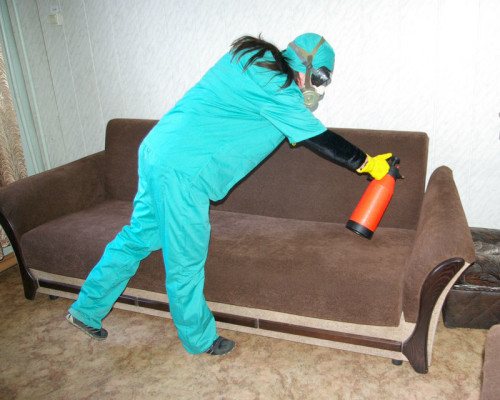

All of these methods are good each in their own way, but nevertheless, with too many bugs in the house, it would be better not to waste your time and nerves, but to contact special services for the destruction of insects.
When to re-process to kill all larvae
Incubation of bed bug eggs lasts 7-12 days, up to a maximum of two weeks in normal home conditions. That is, two weeks after processing, larvae are already hatching from all eggs and there will be no developing eggs left here.
The larvae themselves develop to adulthood in about 30 days.
This means that re-treatment should be carried out precisely in this time window - not earlier than two weeks after the first disinfestation, but also not later than 30 days. If carried out earlier, there is a risk that at this time single eggs will remain in the apartment, from which the larvae have not yet hatched, and they will hatch after the second treatment. If carried out later than a month later, by the time of the second persecution, individual adult bugs may already appear in the apartment, which will lay new eggs and, similarly, larvae will hatch from them after the second treatment.
Our practice in Disincity shows that usually no re-processing is required. According to our statistics, in 83 cases out of 100 after our first treatment, bugs no longer bite people. Only in 17% of cases there is a need for reprocessing. In fact, it is required if your bedbugs were poisoned, but after a week and a half, bites began to appear again. If you are sure that bedbugs do not get to you from neighbors, then these bites are left by small larvae. You can try to find them and if you find them, then call the service and carry out a second pest control.
Measures to prevent the appearance of parasites
To protect your home from bedbugs:
- Do not visit places where these bloodsuckers can be: houses with unsanitary conditions, cheap hotels, do not invite people in whose houses there may be parasites, because 1-2 individuals, moving to a new house, will quickly give rise to a new population.
- Be sure to regularly wet your home and check the condition of sofas, beds and other sleeping places for signs of insects.
- Check and wash bedding at high temperatures and use a hot iron.
- Keep birch brooms and bouquets of dry tansy in the house - this will help scare off bedbugs and prevent parasites from moving away from neighbors.
Self-control of bedbugs is not an easy and painstaking business. If you want to achieve a result, then you need to spend time and effort on processing all the premises in the house, otherwise the bugs will return again and again.
How to get rid of the larvae correctly?
This second treatment is usually simpler than the first. The fact is that small larvae keep very compactly near sleeping places. Due to the fact that they run very slowly, they cannot crawl more than one and a half to two meters during the night.
Therefore, they should be either on the mattress or on the sofa or bed on which the person sleeps.
Later, adult bugs can already hide for a day and further, right up to the neighboring rooms and even with neighbors in the apartment, but the larvae are almost right on the sleeping places. Here it is quite easy to treat them with a product and kill them.
In this case, the larvae concentrate in relatively calm places, where no light falls and a person rarely looks in. For example, on clothes and directly on bedding, in pillows and blankets, they are extremely rare.
Most of them are found on the seams of mattresses and sofa upholstery. The larvae are very small and the space under the overhanging suture is enough for them to hide and stay here during the day, digest blood and prepare for the next feeding. Here, under the seams of the mattresses, they should be looked for first of all, and then inspect the soft elements of the sofa, its internal cavities, the bed frame, armrests and fasteners.
Starting from the second age, the larvae can already hide behind baseboards and under peeling wallpaper and behind ceiling moldings - here they also need to be looked for, even if all these decorative elements need to be removed for this.
It is clear that the longer you pull with re-processing, the larger during this time the larvae will become and the farther from the sofa and bed they will be able to escape after being bitten. Therefore, the more time elapses after the first treatment, the more voluminous and large-scale the second disinfestation will have to be.
In this case, the larvae die from all the same drugs that effectively poison adult bedbugs.
Harm done
Bedbug bites are unpleasant, especially for people with sensitive skin. They itch, itch, irritate, and can cause allergies. Sometimes it comes down to being treated by a doctor.
Worse, it's the added stress that deprives you of normal restful sleep. This stress builds up and triggers your aging mechanisms. Bedbugs will undermine your health not by direct attack, but by latent psychological pressure of anxiety and discomfort, when you no longer feel like a master at home, and you lose a sense of security in your bed.

